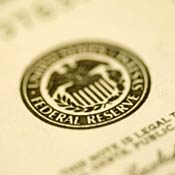Market Assessment
Published October 30, 2008
Emerging Trends in Real Estate is a 30-year old annual publication, focusing on the real estate and land use industry. It is co-authored by ULI (the Urban Land Institute) and PricewaterhouseCoopers LLP. It surveys experts from all sectors of commercial real estate and comes back with a report on where they believe the industry stands and is heading.
Brace yourself. The future has (unfortunately) become clearer.

According to the 2009 report issued recently, experts don’t expect the US economy to hit bottom until 2009, and they feel it will “flounder” throughout 2010 as well. In general, interviewees believe that financial institutions will continue to be pressured into moving bad loans off balance sheets.
Investors will likely wait until sellers realize that the market has adversely changed requiring them to lower their asking prices or wait until the market slowly comes back. Once the adjustments have made, both by lenders and sellers, those investors with cash or can afford low leverage transactions will be “king.”
In a situation like this, when bad debt is rampant and investors are burdened with upside down properties, serious retrenching is taking place. Absolute avoidance of risk seems to have taken priority with both lenders and those they serve. Commercial real estate is seeing a tremendous shift to a “back-to-basics attitude toward property management, underwriting, and deal structure”.
However, if you own an 8-plex apartment house near a bus stop, you’re still probably going to make money. That’s one of the few shining lights left in commercial real estate, says the report.
While the situation is dire, to be sure, there is hope for the future in the creation of more stable real estate markets. However, Emerging Trends has indicated several things that have to happen before we can see that recovery:
- Private real estate markets need to correct – lenders must force distressed owners to become motivated sellers.
- Debt capital needs to flow – the CMBS market must recreate itself and lenders will need to learn to adjust to the new, more conservative regulatory environment.
- Regulators need to restore confidence in the securities market – systemic overhaul of the capital markets will slowly increase debt flows.
- The economy needs to improve – unfortunately a waiting game for most CRE players.
 The report predicts that the property sectors most promising in the months ahead will be apartments, with distribution/warehouse coming in second. Downtown office space is expected to outperform suburban markets.
The report predicts that the property sectors most promising in the months ahead will be apartments, with distribution/warehouse coming in second. Downtown office space is expected to outperform suburban markets.
But retail development will likely be at the bottom end of the real estate investment spectrum, with vacancies expected to climb due to the economic downturn.
Source:
www.marketwatch.com, Commercial Real Estate Market to Hit Bottom in 2009…, October 21, 2008.






